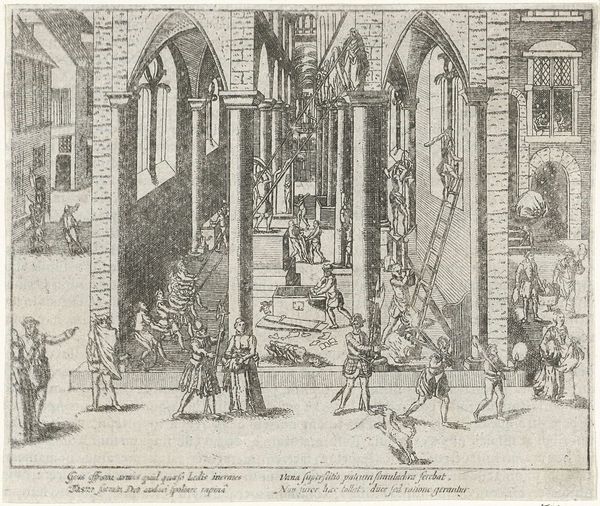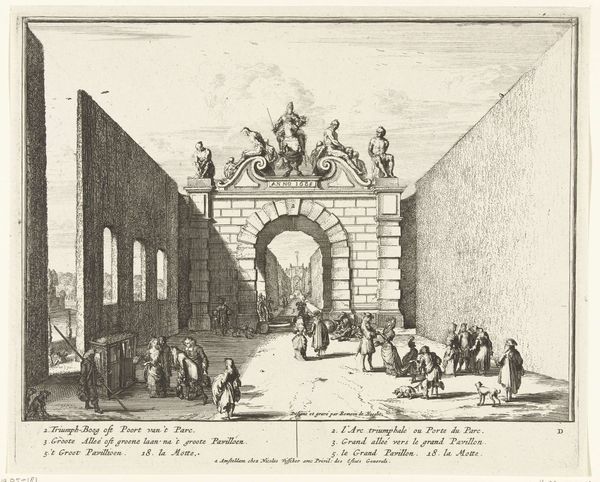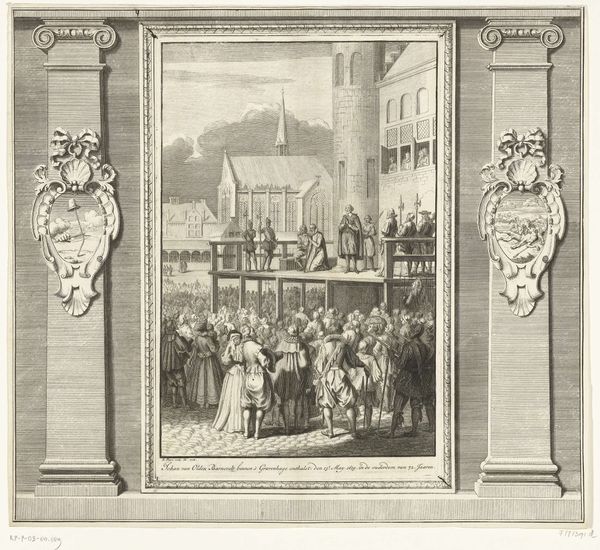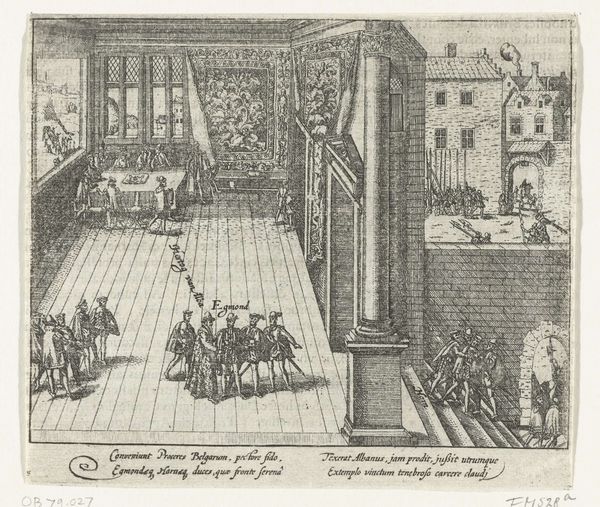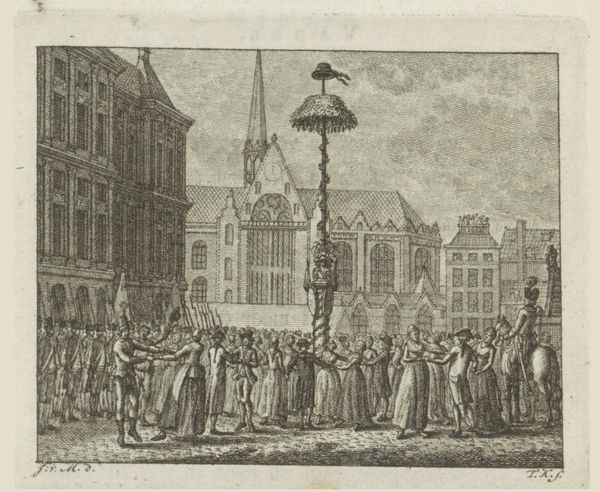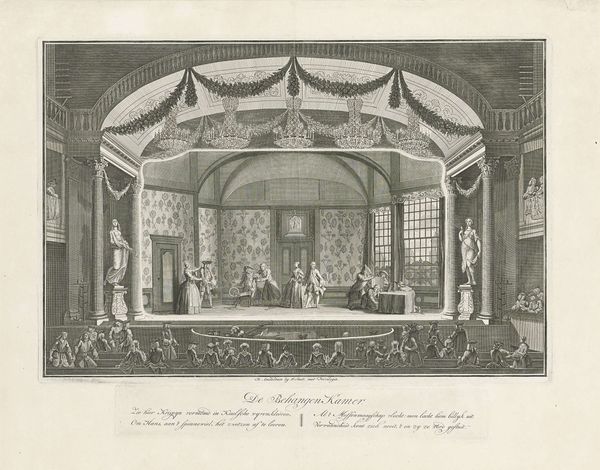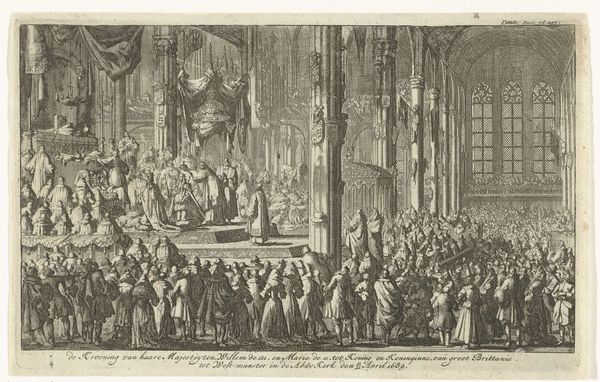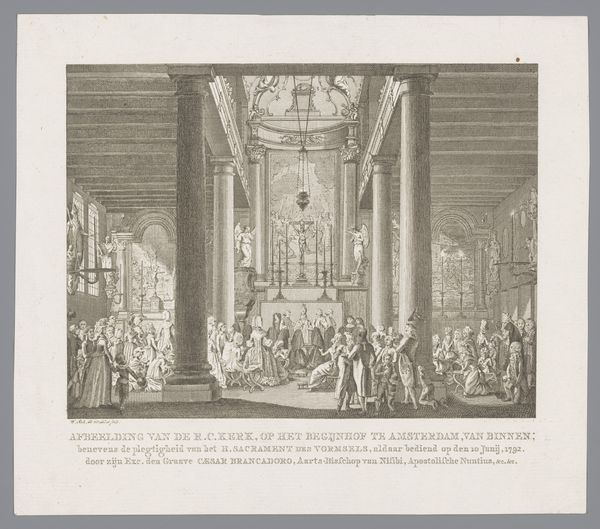
drawing, lithograph, print, ink
#
drawing
#
lithograph
# print
#
caricature
#
old engraving style
#
ink
#
romanticism
#
pen-ink sketch
#
genre-painting
#
history-painting
Dimensions: height 273 mm, width 377 mm
Copyright: Rijks Museum: Open Domain
Curator: This provocative image is titled "Eerste spotprent op het muziekconcours te Brussel, 1830," or "First Cartoon on the Music Competition in Brussels, 1830." Created anonymously in 1830 using ink and lithography, this print serves as a blistering commentary on the social and political climate surrounding a music competition. Editor: Blistering indeed! The overall mood strikes me as deeply satirical, verging on cynical. The composition is chaotic yet organized, and the detailed linework lends it an almost theatrical air. It's like a stage play where absurdity reigns. Curator: Precisely. Brussels in 1830 was on the cusp of revolution. This print encapsulates the rising discontent toward Dutch rule and the perceived cultural inferiority imposed upon the Belgians. Editor: Tell me more about that symbolism. The cage, the figure on a pedestal… it's dense with meaning! Curator: The figures caged likely represent the Belgian participants, perceived as trapped or stifled under foreign governance. And yes, the elevated figure is perhaps mocking foreign authorities imposing standards or judgment upon Belgian art and identity. The banners might represent competing factions or outside influence, quite loaded given that Belgian identity was under enormous pressure at this time. Editor: The overall image hints at suppression and perhaps a brewing uprising of sorts, doesn't it? I mean, caging people, even in effigy, speaks volumes about the state of liberty, artistic or otherwise. The perspective of Romanticism, evident here, gives voice to this suppressed freedom and calls into question who benefits and who is caged, politically and emotionally, within culture. Curator: I concur entirely! Its emotional punch derives precisely from reflecting the tension inherent in a society ready to throw off perceived yokes of subjugation through visual culture and how this imagery taps into cultural memory and ongoing trauma around suppression of Belgium's national and artistic voices. Editor: Seeing it in this historical context… the artist brilliantly weaponized satire, using caricature to expose social fault lines. Curator: Indeed, understanding the context of cultural suppression infuses new life into the symbols here. This drawing reveals the undercurrents of artistic frustration as part of pre-revolutionary Belgium. Editor: Yes, it is much more than simple ink on paper; this print stands as a stark reminder of art's potential to document the pressures societies and individuals have endured.
Comments
No comments
Be the first to comment and join the conversation on the ultimate creative platform.


